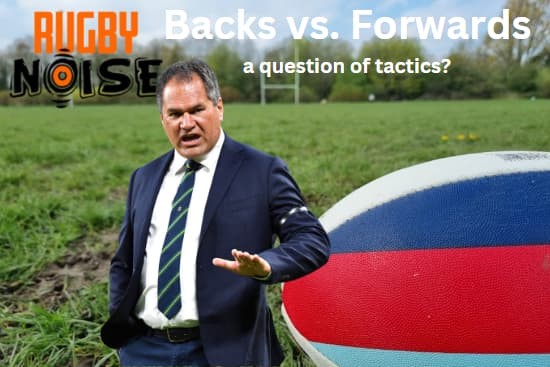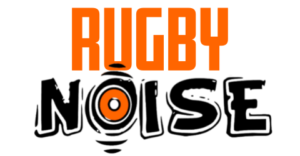Rugby positions are split pretty simply into forwards and backs. The two groups have very different roles. Considering that they are opposites, there is often talk about which group is more important to the game.
Are backs or forwards more important in rugby? It is incredibly difficult to say whether backs or forwards are more important in rugby, but overall perception is that forwards are more important in rugby than backs. A good coach would shift tactically depending on whether their squad had its strength in the backs or the forwards. But without a solid group of forwards most Rugby teams would be dead in the water.

Let’s take a look at the different roles they play on a Rugby pitch. The two groups have very different roles and are better at different things. You would probably say that forwards are more important in defence. They are required to make the big hits in defence, while also still being primary ball carriers in attack.
The Backs tend to be more important in attack, with the ball going through their hands after the set piece. The player who kicks for a rugby team will be a back as well and this is a very important role. A good group of backs can make a very exciting, attacking team.
It is generally thought however that forwards are more important than backs due to one key reason. The set piece is a huge part of rugby. Scrums and Lineouts can quite often win or lose a game for a team and these are made up of solely the forward pack. This makes the forward pack incredibly important.
While the backs are generally more important in attack in rugby, the Number 8 tends to be the most important ball carrier for teams. In fact, we are seeing forwards become more important in attack as they are getting more mobile. So Forwards are getting even more important to rugby teams.
Considering the two groups do very different jobs, it is difficult to say which is more important. But considering forwards are used much more during games, it is generally believed that they are the more important group.
Are forward rugby players heavier than backs?
Forwards and backs tend to be very different, not only in their roles but also in the size and shape of their players.
Forwards are definitely heavier than backs in rugby. Forwards on average will be much heavier than backs. If you look at almost any rugby team, the heaviest players will be either the props or the second row. Whereas the lightest players will almost always be the scrum-half or one of the wingers.
But even on average forwards are much heavier than backs. That is mainly down to the power that they need in the scrum, as well as needing to be difficult to push the other way in the scrum. Being heavy means you are difficult to push backwards and this is an important skill for scrummaging.
Backs need to be much lighter because they need to be more mobile. They are expected to cover much more space than the forwards and so will need better stamina. This usually means they carry less muscle than the forwards, making them much lighter than the forward pack.
What is the hardest back position in rugby?
Being a back in rugby may not be as physically demanding as being a forward, but it is still an incredibly difficult position to play.
It is generally thought that Fly-Half is the hardest position in the backs to play. That is because they are very much seen as the general of the backs, needing to be in charge of what the backs do in attack. They are very much the architect of what the backs do and often the captain of the team.
Decision-making is very important in rugby and so the Fly-Half position is crucial to rugby. It is also crucial because the Fly-Half is quite often the player which kicks for their team. This means that they are even more important to their team. It is why guys like Johnny Wilkinson, Dan Carter and Owen Farrell have become some of the biggest names in rugby.
What do forwards do in rugby?
Forwards are quite a varied group and so their roles can also be quite varied. However, there are some general things which all forwards will do.
Scrummaging is one of those things that all forwards do. That is because all forwards need to scrummage because the scrum is made up of all eight forwards from both teams. In the scrum, the players need to be able to drive with a lot of power while being parallel with the ground. It is an incredibly physical job that involves a lot of technique for the front row.
One of the jobs of the forwards that is not always done by all forwards is the lineout. This is when the ball is thrown into play after it has gone out of play. The forwards will usually need to lift a jumper in the air who can catch the ball and either set up a maul or pass the ball back to the scrum half.
It is incredibly rare for a back to be involved with the lineout. In fact, it is usually the props lifting the Second row in a lineout. This is because the second row is often the tallest player on the pitch and so will be able to get the highest at the lineout. The props are usually the lifters because they are incredibly strong and low to the ground.
Over the years, the forward’s roles have changed slightly. While forwards have always been required to be top tacklers, they now need to have the agility and control to be able to get over the ball and create turnovers for their team. In an attack, they need to be powerful to clear and secure a ruck to continue the attack.
Forwards have also become more important in ball carrying, with forwards being crucial in getting over the gain line when it gets close to the try line. Forwards also need to be able to cover a lot of space as the game is getting faster and players are generally getting more agile.
